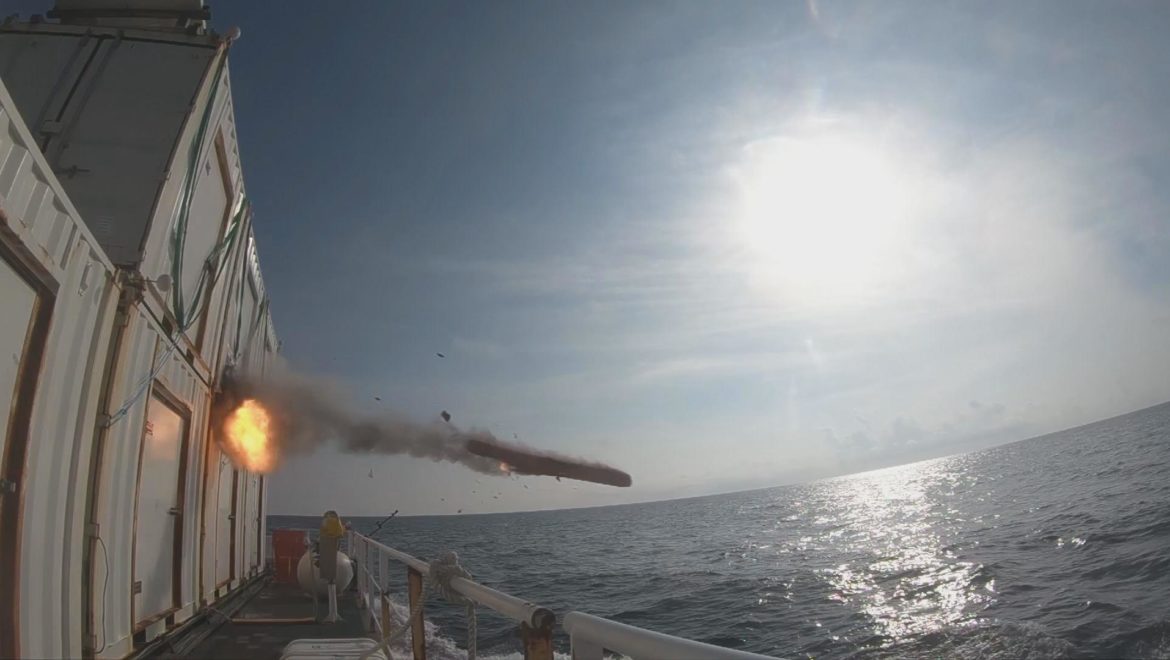MBDA’s Sea Venom-ANL anti-ship missile has successfully conducted a further firing trial, highlighting Sea Venom-ANL’s lock on before launch (LOBL) capabilities, with images from the missile’s infrared seeker being used by the operator to designate the target prior to launch.
The trial, conducted on November 14, 2018 from a DGA Dauphin test helicopter, was the final development firing for the missile prior to the start of qualification trials in 2019.
Frank Bastart, MBDA’s head of the Sea Venom-ANL program, said: “This latest successful trial is a great milestone for the program, which will provide a major increase in the naval strike capabilities of our armed forces. Throughout the trials campaign we have continued to push the system and its operating modes to its limits. The success of these tests is testament to the unrivalled performance of the Sea Venom-ANL missile.”
Sea Venom-ANL is capable of being launched from a wide range of platforms, and will be used on the UK Royal Navy’s AW159 Wildcat and French Navy future HIL helicopters. This 120 kg sea-skimming missile is designed to enable navies to deal with a range of threats including fast moving patrol boats, corvettes and coastal targets. The missile is capable of being fired in both lock on before launch (LOBL) and lock on after launch (LOAL) modes, with a two-way datalink and imaging seeker giving the operator the ability to monitor the engagement, perform aim point refinement, select a new target, or abort the mission if necessary.
Read More: MBDA Group Press Release.

